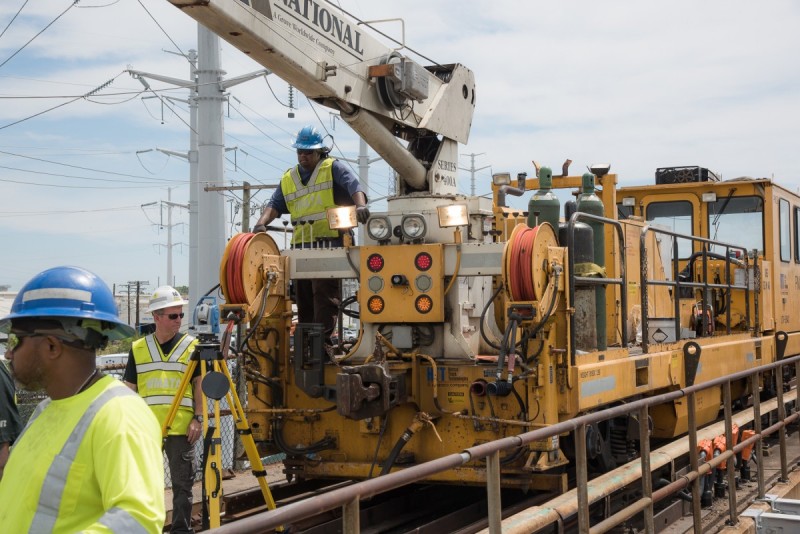Ice from Tuesday’s snow storm isn’t doing SafeTrack any favors in Alexandria

WMATA crews performing a switch replacement outside Stadium-Armory during Surge 2. Image by WMATA used with permission.
Last Tuesday’s snow storm, while underwhelming in some parts of the region, caused major interruptions to the work happening under Metro’s SafeTrack program. The current surge was scheduled to end April 9th but will now last an extra three days. Also, Metro is pushing half the work it was going to do during the surge to later in the year, or into 2018.
Here's how this SafeTrack surge is changing
SafeTrack’s Surge 13 was scheduled to happen in two phases. The first phase, which got underway March 4th and was supposed to end April 1st, has meant single-tracking between Braddock Road and Huntington/Van Dorn Street stations, with Yellow and Blue Line trains running every 24 minutes (down from every six and 12, respectively). Crews have been repairing the cement slabs (grout pads) and railties that the tracks lay on, as well as replacing fasteners and repairing power and automatic train control equipment.
The second phase, which was to run from April 2nd through the 9th, was going to mean single-tracking between King Street and Huntington stations, with the Yellow Line running at reduced frequencies.
The delay from this week’s snow and residual ice means that the current single-tracking between Braddock Road and the Huntington/Van Dorn Street stations will last an extra 11 days, ending on April 12th instead of April 1st, with Blue Line trains running less frequently for the duration. Phase 2, which was going to run April 2nd through April 9th, is now largely not going to happen at this time. With time lost due to the snow and other potential schedule slips in the ongoing work, it makes more sense just to reschedule that to a later date.
Workers who usually focus on this zone were needed elsewhere during the snow
As the snow approached last Monday, track crews in the SafeTrack area left around 6 pm to help in other places around the system, working to keep the tracks clear so that trains could continue to run; that largely happened with success on Tuesday. Since workers were reassigned temporarily, no work in this zone happened overnight Monday into early Tuesday.
When crews got back into the SafeTrack area to clear the snow and assess the situation, they had to deal with clearing everything they were working on before being able to actually get work done. Clearing the snow — in particular ice, which is more of an issue on the elevated sections of track — meant Metro lost several days of work time.
In addition to the schedule delays, Metro also announced changes to the train schedules in the SafeTrack zone. Instead of saying Yellow and Blue Line trains run every 24 minutes south of National Airport, the agency will now say those trains will run between every 24 and 30 minutes. Trains won’t actually be running less frequently than they are now, it's just that the revised number better matches the types of delays that customers have been experiencing since the surge started.
Buses will also replace trains after 8 pm south of Braddock Road station on two nights, March 24th and April 15th, to allow Metro to move around some heavy machinery.
